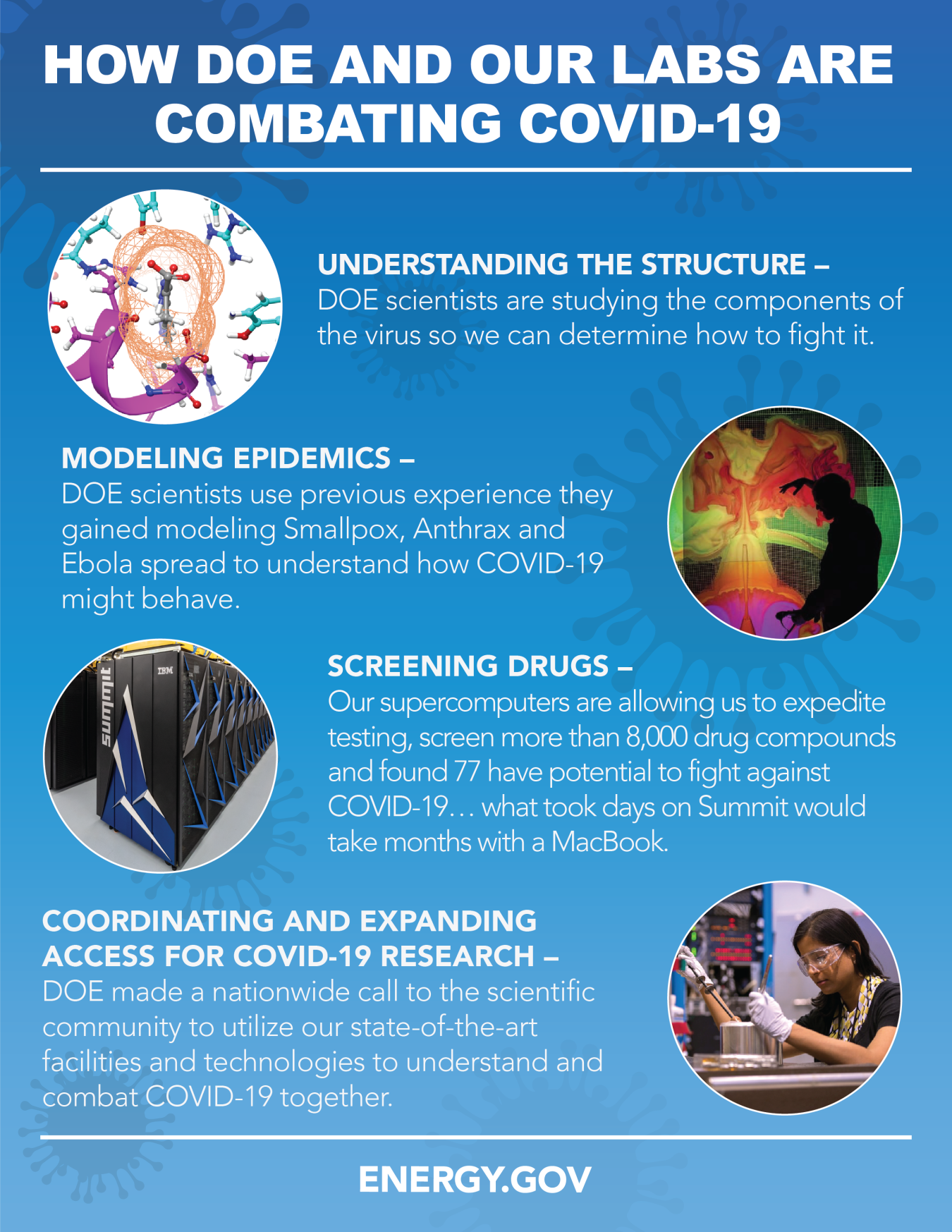In the latest episode of Direct Current, an energy.gov podcast, we sat down with Dr. Chris Fall, Director of the Department of Energy's Office of Science, to discuss the agency’s response to COVID-19.
Learn more about the work scientists at our National Labs have been doing to understand COVID-19.

Understanding the Novel Coronavirus’ Structure:
Scientists need to know precisely how the novel coronavirus is built to better understand how it infects other cells, how it is transmitted, and what drugs it might be vulnerable to. Argonne National Laboratory (ANL) researchers and their colleagues, for example, have determined the atomic structure of viral proteins that appear to be important inside an infected cell, are involved in virus replication, or function during virus assembly. These so-called non-structural proteins (they are not part of the virus particle structure itself) are principal drug targets. The proteins were expressed, purified and crystallized at ANL’s Advanced Protein Characterization Facility, and data were collected at the Structural Biology Center and other beamlines of the Advanced Photon Source, which provides ultra-bright, high-energy X-rays that illuminate the structure and composition of very small entities like the virus that traditional microscopes can’t.
Modeling Epidemics:
Many of the National Laboratories have experts who can plot COVID-19 infections and develop models for how and where it is spreading. Los Alamos National Laboratory, for example, develops mathematical and computational models for infectious diseases, and in the past crafted epidemiological models for Smallpox, Anthrax, HIV, Ebola, and Influenza, among others. The lab has also worked on investigating the role of internet data streams on monitoring emergent behavior during outbreaks and forecasting infectious diseases. They are putting their expertise to work modeling how COVID-19 infections spread, and how people behave during outbreaks.
Screening Drugs:
Over the decades, hundreds of thousands of chemical compounds have been tested for effectiveness against many other kinds of coronaviruses and viruses in general. The computing speed of DOE’s fastest and most powerful supercomputers and its laboratories’ deep expertise in artificial intelligence is being used to rapidly screen known chemical compounds that might affect this novel coronavirus. Researchers at Oak Ridge National Laboratory announced that they have used Summit, the world’s fastest and smartest supercomputer, to screen more than 8,000 drug compounds for 77 that have potential for use in the fight against COVID-19.
Coordinating and Expanding Access for Coronavirus Research:
DOE is making its unique, world-class user facilities available to the scientific community on a priority basis for COVID-19 work. The DOE X-ray light sources are coordinating priority access to their structural biology resources.